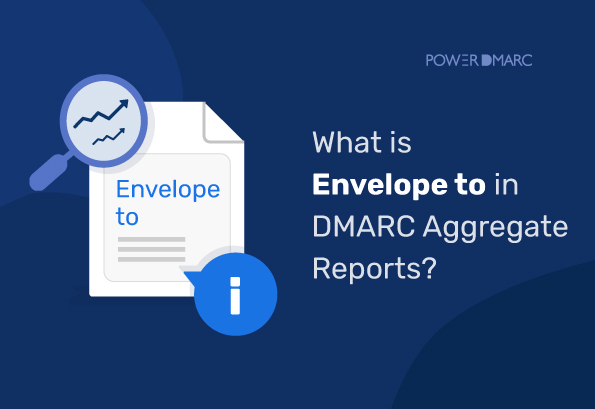In the world of email authentication, DMARC is one of the most widely used protocols. DMARC helps domain owners to protect their domains from email spoofing and phishing attacks by providing a mechanism for email receivers to check the authenticity of email messages.
Recently, PowerDMARC has added a new column of information related to the DMARC aggregate reports on its portal – the “Envelope to” column. This new feature provides valuable information to domain owners about the recipient’s email service provider (ESP) type.
What information is contained in the DMARC Envelope to column?
The “Envelope to” column provides information about the recipient’s email service provider (ESP) type. When an email is sent from a domain, it passes through multiple email servers before it reaches the final destination. The “Envelope to” column shows which ESP handled the email last, providing insights into the email delivery path.
For example, if you send an email to a client using hotmail.com, and the mail server of that client sends out the DMARC XML report, you will be able to see that it was received by hotmail.com.
How is the DMARC Envelope to column a valuable addition to our reporting interface?
The “Envelope to” column is a valuable addition to the DMARC aggregate reports because it helps domain owners understand the email delivery path and identify any issues. With this information, domain owners can see which ESPs are handling their emails and how they are being delivered.
This feature is particularly useful for large organizations that send a significant volume of emails. By analyzing the “Envelope to” data, they can identify issues related to email delivery, such as emails being marked as spam, bouncing back, or being rejected by the recipient’s ESP. This data can help domain owners to make necessary changes to their email authentication setup and improve their email delivery rate.
Furthermore, the “Envelope to” column can also help domain owners to identify potential issues with their email authentication setup. For example, if an email is being delivered to an ESP that is not authorized, it may indicate a misconfiguration issue in your authentication DNS records that need to be addressed.`
What information is contained in the “Reporter” field?
The Reporter is an email service provider or a third-party system responsible for generating DMARC aggregate reports on behalf of the ESP. These reports provide domain owners with insights into the authentication status of their emails and help them to identify any issues related to email delivery.
The Reporter is responsible for collecting the DMARC data from the email service providers, aggregating it, and generating reports in a standardized (XML) format. The reports are sent to the email address specified in the DMARC policy record, usually daily or weekly.
It’s important to note that the DMARC aggregate reports are not a replacement for real-time monitoring of email delivery. Instead, they are a valuable tool for domain owners to gain insights into the authentication status of their emails and to identify any issues related to email delivery, such as emails being marked as spam, bouncing back, or being rejected by the recipient’s ESP.
How is this information presented on the PowerDMARC platform?
From the screenshot, you can see that we have both “Reporter” and “Envelope to” information presented on the dashboard which is not always provided in the DMARC aggregate report.
The “Reporter” field clearly mentions the DMARC reporting ESP who will send the reports to the email sender’s specified address or server, while the “Envelope to” field mentions the recipient’s ESP type.
Note: The “Envelope to” information is not always available in the raw XML aggregate data. Because of this, we have disabled the “Envelope to” column in the default settings which can be manually enabled by customers from the console.
DMARC data is always presented in a simple, easy-to-read format on the PowerDMARC dashboard, parsed from complex XML files. This makes the data human-readable for even those who have little to no technical knowledge. Tables and charts make the data easy to navigate and understand, with quick action buttons at your fingertips.
Sign up today to receive your first DMARC report in just 72 hours!
